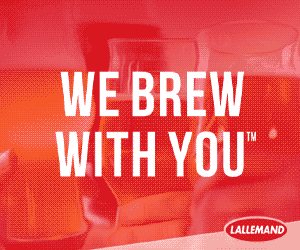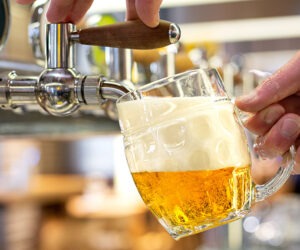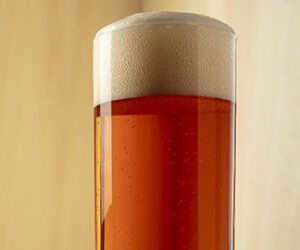Extra Special Bitter (ESB)
I was an undergraduate at the University of California, Davis when I had my first English bitter. A friend’s roommate from London couldn’t abide by the American lager beers we all drank back then. He ranted about how important it was for a beer to have flavor. I remember thinking how silly that was, as beer tasted like beer of course. Yet I listened to him, and upon tasting the beer he offered I realized it was different from the mass-market lagers I was used to drinking. It was quite bitter to my inexperienced palate, with more flavor from fermentation and malt than I was used to.
Strong bitter, often referred to as English pale ale or Extra Special Bitter (ESB is the name of a beer from Fuller’s, not really a style name) is an average to moderate strength English ale. A strong bitter should be firmly bitter by taste (often falling in the range of 30 to 50 IBUs), but the bitterness should not overpower the malt. Balance is important and most examples range from balanced to moderately bitter. While many commercial examples can be described as “hoppy,” do not confuse this style with American pale ale. Strong bitter has more fermentation and malt character than American pale ale and the hop character is nothing like the big, bold hop character you find in many American-type pale ales. Moderate is the key word here and the hop character should be somewhat restrained and balanced, never overshadowing the fermentation and malt character.
This is the highest gravity version of the bitter family, which results in a few noticeable differences from its kin. Strong bitter tends to have a slightly fuller malt backbone than special/best bitter and the appropriate bitterness to balance the additional malt. The additional malt creates a little more alcohol, a bit more body and a touch more flavor. Some examples will express a touch of alcohol flavor and aroma, although I prefer examples that are more subtle. Strong bitter ranges in color from golden to deep copper. These beers are also very clear, due to the highly flocculent yeast and the head is usually minimal, due to low carbonation.
British pale ale malt is a key component of any bitter recipe. It provides a background biscuit-like malt character that many people associate with fine British beers. British pale ale malt is kilned a bit darker (2.5 to 3.5 °L) than the average American two-row or pale malt (1.5 to 2.5 °L) and this higher level of kilning brings out the malt’s biscuity flavors. A few malt companies (Crisp Malting is one) still produce British pale ale malt from cultivars such as Maris Otter using a traditional floor malting method. The result is malt with a slightly darker color (3.5 to 4.0 °L) and more flavor than other pale ale malts. It is the malt of choice for many English beer fanatics. British pale ale malt is highly modified and well suited to single infusion mashes and a moderate mash temperature around 152 °F (67 °C) is a good target for this style.
If you’re brewing with extract, your best choice is an extract made from British pale ale malt. There are some British style malt extracts currently on the market made from 100% Maris Otter malt and they are an excellent choice for English beers. If you end up using domestic two-row malt or extract made from it, you’ll need to compensate with some additional specialty malts such as Munich, biscuit or Victory, but use restraint. For a 5-gallon (19-L) batch, add no more than 3⁄4 pound (0.34 kg).
While there are some modern examples of strong bitter, called summer bitter, brewed with pale malt only, my feeling is that a proper English bitter must have at least a touch of caramel character. Even a small dose of crystal malt adds caramel notes, body, and helps fill out the malt flavors. The type of crystal malt also makes a difference. Darker color crystal malts add richer colors, as well as some dark caramel, toasty, roasted and raisin flavors. Lighter color crystal malts add sweeter caramel notes. The maximum crystal malt this style can handle without getting heavy and cloying is around 8 to 10% with a color range of 10 to 150 °L. However, the darker the crystal, the less you should use. A bitter with 10% 150 °L crystal malt may not be cloying, but it can be too intense a flavor for this style. On the flip side, a bitter with all light color crystal malt will tend to be sweet and lack depth of character. Some bitter recipes include other specialty malts. My favorites are Special Roast, Victory, biscuit and aromatic, but a fine bitter can be made without them. Commercial recipes range from including minimal, low-color specialty malt additions to considerable amounts of mid-color malts. Some commercial recipes also use a little chocolate or black malt for color. If you take this approach, the amount of highly kilned malt should be small enough that the flavor is not apparent in the finished beer. Use an ounce or two (28–57 g) at most in a 5-gallon (19-L) batch. Specialty malts are a big part of what differentiates one brewer’s bitter from another, so feel free to experiment. If you do want to brew a summer bitter, just replace any specialty malts with more British pale ale malt.
While corn, cane sugar and other adjuncts are traditional in brewing many English beers, I usually omit them unless I’m crafting a big beer and I need to increase wort fermentability, I’m trying to thin the body, or I’m trying to reduce the intensity of the base malt flavors. If you’re using a less attenuative yeast and don’t have the ability to control the wort fermentability through mash temperature, then replacing some base malt in your recipe with simple sugar can help. Simple sugars ferment fully, thin the beer, and provide very little in the way of flavor contributions. I’ve seen recipes that use brown sugar, but don’t count on it to add much in the way of flavor. Use it only for thinning the beer. If you want to add brown sugar/caramel-type flavors, use caramel malts. Corn and other non-barley adjuncts reduce the overall malt flavors, when used in place of the base malted barley. I prefer a bold base malt flavor, so I don’t use adjuncts in my strong bitter.
Bitters are best brewed with English hops, such as East Kent Goldings, Fuggles, Target, Northdown or Challenger. The bittering level for strong bitter is in the range of 30 to 50 IBU. What you’re targeting is noticeable hop bitterness without overwhelming the malt background. Keep in mind that there are many factors at play in the final impression of bitterness for the drinker. The starting and final gravities, the character malts selected, the type of base malt, the yeast strain, the pitching rate, and even the yeast cell size have an impact on the perceived bittering. For most strong bitters, a bitterness-to-starting gravity ratio (IBU divided by OG) between 0.6 and 0.9 gives the proper result. The bulk of the hopping should be as a bittering addition at 60 minutes. I prefer a single, large, late hop addition near flame-out. This gives the beer a noticeable hop aroma without too much hop flavor like earlier additions may give. You can add multiple small hop additions around 1⁄4 to 1⁄2 ounce (7 to 14 g) for a 5-gallon (19-L) batch at 20 minutes and later, but for this style I like one larger addition. Remember that this isn’t an extremely hoppy style, so don’t go overboard. Traditional cask conditioning can include dry hopping, perhaps a 1⁄4 to 1⁄2 ounce (7 to 14 g) per 5 gallons (19 L). If you do dry hop this beer, reduce the late hop additions to keep the hop flavor and aroma under control.
Much has been written about the high sulfate water of Burton-upon-Trent being a key element in brewing bitters. It is true that water with high sulfate content enhances the sharp, bitter aspect of hops. However, this is very easily overdone, which results in a chalky, metallic, or harsh character. Brewers today brew good bitter with a wide range of water types. In most cases, any water is well suited as is unless it is on the soft end of the spectrum. If you have soft water, add some gypsum or Burton salts, but start low, targeting half the amount of sulfate typical of Burton water. Use no more than 1 teaspoon of Burton salts per 5 gallons (19 L) or no more than 3 grams (0.1 oz.) of gypsum per gallon (3.8 L). It is always better to add less than more. While this won’t exactly mimic the water of Burton-upon-Trent, it is more than enough to accentuate the hop bitterness. You can add your mineral salts to the mash water or, if you’re extract brewing, you can add the mineral salts to your water before you heat it. For all other water types, first try brewing this style without any additional mineral salts.
Fermentation creates much of the flavor and aroma in most British beers. “English” yeast strains provide a variety of interesting esters and tend to be low to moderately attenuating, leaving some residual sweetness to balance the bitterness and help fill out the beer. They are also extremely flocculent, which makes them ideal for cask conditioning. These yeasts produce a fairly low level of esters at cool fermentation temperatures (<65 °F/18 °C) and abundant fruity esters and alcohol notes at high temperatures (>70 °F/21 °C). It is better to start in the middle of this range, letting the temperature slowly rise a few degrees over a couple days. This creates the expected level of esters and keeps the amount of diacetyl in the finished beer at a minimum.
My favorite yeasts for this style are White Labs WLP002 (English Ale) and Wyeast 1968 (London ESB Ale). They provide a nice ester profile without being over the top. If you like to experiment, try to select English yeasts that create interesting ester profiles and an attenuation percentage from the upper 60s to the low 70s. If you prefer dry yeast, DCL Safale S-04 produces good results. No matter which yeast you’re using, it is important to aerate the wort immediately before or after pitching your yeast. Oxygen is important to proper cell growth and growth is important to beer flavor development.
Serving bitter at around 55 °F (13 °C), allows the character of the beer to come out and can improve drinkability. Colder temperatures prevent the drinker from picking up the interesting fermentation and malt flavors and aromas, so don’t go below 50 °F (10 °C). Target a carbonation level around 2 volumes of CO2 for bottled, 1.5 volumes for kegged, and 1 volume of CO2 for cask conditioned beer.



